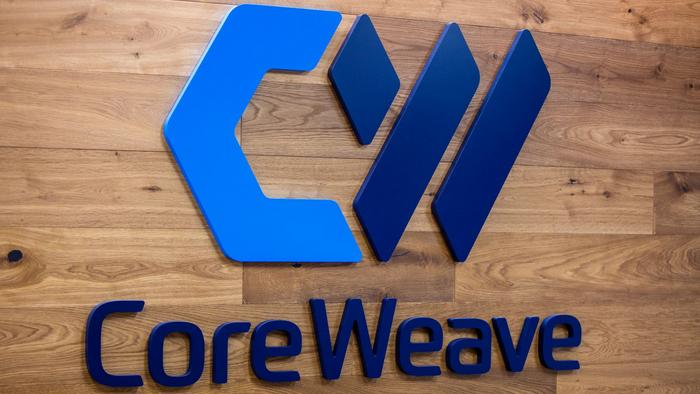The Ultimate Guide To Briefs: A Comprehensive Overview

Table of Contents
What is a Brief and Why Are They Important?
A brief is a concise document that outlines the goals, objectives, and requirements of a project. The specific content and structure of a brief will vary depending on the context. In design, a design brief details the visual requirements for a project; in marketing, a marketing brief outlines a campaign's strategy and goals; and in legal contexts, a legal brief summarizes the arguments and evidence for a case. Regardless of the field, the core purpose remains the same: to provide a clear and shared understanding of the project's scope and expectations.
Why are clear briefs so important? They are the cornerstone of successful project management and collaboration. Effective briefs lead to:
- Improved communication and collaboration: A well-defined brief ensures everyone is on the same page, minimizing confusion and misunderstandings.
- Clearer project goals and objectives: A concise statement of purpose keeps the project focused and prevents scope creep.
- Reduced ambiguity and misunderstandings: A detailed brief leaves no room for guesswork, preventing costly errors and delays.
- Enhanced efficiency and time management: A clear brief streamlines the process, allowing for better resource allocation and faster turnaround times.
- Improved client satisfaction: When clients understand the project's scope and expectations from the outset, satisfaction is significantly higher.
Consider these examples: a website design brief might specify the target audience, desired functionality, and brand guidelines; a marketing campaign brief would detail the target demographics, campaign objectives (e.g., increase brand awareness by 20%), and key performance indicators (KPIs). Without these crucial documents, these projects would be much more likely to fail.
Key Components of an Effective Brief
Regardless of the project type, an effective brief contains several essential elements:
- Background/Overview: This section sets the stage, providing context, client information (if applicable), and a clear statement of the problem or opportunity the project aims to address.
- Objectives: What are you hoping to achieve? Use the SMART framework: Specific, Measurable, Achievable, Relevant, and Time-bound. Vague objectives lead to vague results.
- Target Audience: A detailed description of the intended audience is crucial for tailoring the project's approach. Include demographics, psychographics, and any other relevant information.
- Key Messages: Identify the core information that needs to be communicated. These are the central themes that will guide the project.
- Scope of Work: Clearly define all tasks and deliverables. What needs to be done, and by when? Avoid ambiguity.
- Timeline & Budget: Realistic deadlines and allocated resources are critical for project success. Consider potential delays and build in buffer time.
- Deliverables: Specify the specific outputs expected from the project. This might include a website, marketing materials, a legal document, etc.
- Success Metrics: How will you measure the success of the project? Clearly defined metrics ensure accountability and allow for effective evaluation.
Different Types of Briefs and Their Specifics
While the core components remain similar, briefs vary depending on their purpose:
- Design Briefs: Focus on the visual aspects of a project, including branding, style guides, and design specifications. They often include mood boards and examples of desired aesthetics.
- Marketing Briefs: Outline marketing strategies, target audiences, campaign objectives, and key performance indicators (KPIs). They often incorporate market research and competitive analysis.
- Legal Briefs: Summarize the legal arguments and evidence for a case, citing relevant laws and precedents. They are highly structured and formal documents.
- Creative Briefs: Focus on generating creative solutions for a problem or opportunity. They emphasize inspiration and innovation, often including brainstorming prompts and examples.
Each of these brief types requires a tailored approach, but the principles of clarity, conciseness, and collaboration remain paramount.
Best Practices for Writing Effective Briefs
Creating an impactful brief requires careful planning and execution. Here are some best practices:
- Use clear and concise language, avoiding jargon: Ensure your brief is easily understandable by everyone involved.
- Focus on the "why" as well as the "what": Explain the rationale behind the project to provide context and motivation.
- Involve relevant stakeholders in the brief creation process: Collaboration ensures buy-in and avoids misunderstandings.
- Ensure the brief is easily accessible and understandable: Use a clear and consistent format, with headings, subheadings, and bullet points.
- Regularly review and update the brief as needed: Projects evolve, so ensure your brief remains current and relevant.
- Use visuals (charts, graphs) where appropriate to illustrate key information: Visual aids can enhance comprehension and engagement.
Common Mistakes to Avoid When Writing Briefs
Avoiding these common pitfalls will significantly improve your brief's effectiveness:
- Unclear objectives: Vague goals lead to wasted time and resources.
- Insufficient information: A poorly-researched brief leaves too much room for interpretation.
- Unrealistic timelines and budgets: Setting unrealistic expectations leads to stress and project failure.
- Lack of communication: Poor communication breeds misunderstandings and conflict.
- Ignoring stakeholder input: Failing to involve key stakeholders results in a disconnect and reduced buy-in.
- Poorly defined deliverables: Unclear deliverables make it difficult to measure success.
Conclusion
Mastering the art of crafting effective briefs is a critical skill for achieving successful project outcomes. By understanding the key components, different types, best practices, and common pitfalls, you can significantly improve communication, collaboration, and ultimately, the quality of your projects. Remember, a well-written brief acts as the foundation for any successful endeavor. Download our free template (link here) to help you create your own perfect brief and start seeing the benefits today! Learn more about crafting impactful briefs and explore additional resources on our website (link here). Start improving your projects with better briefs now!

Featured Posts
-
 Tuesdays Sharp Decline In Core Weave Crwv Stock A Detailed Look
May 22, 2025
Tuesdays Sharp Decline In Core Weave Crwv Stock A Detailed Look
May 22, 2025 -
 Njwm Jdd Fy Tshkylt Mntkhb Amryka Bqyadt Bwtshytynw
May 22, 2025
Njwm Jdd Fy Tshkylt Mntkhb Amryka Bqyadt Bwtshytynw
May 22, 2025 -
 Big Rig Rock Report 3 12 Rock 106 1s Trucking Industry News
May 22, 2025
Big Rig Rock Report 3 12 Rock 106 1s Trucking Industry News
May 22, 2025 -
 Rising Temperatures Rising Losses Global Forest Fires And Deforestation
May 22, 2025
Rising Temperatures Rising Losses Global Forest Fires And Deforestation
May 22, 2025 -
 Groeiend Autobezit Stimuleert Occasionverkoop Bij Abn Amro
May 22, 2025
Groeiend Autobezit Stimuleert Occasionverkoop Bij Abn Amro
May 22, 2025
Latest Posts
-
 The Complete List Of Movies Leaving Hulu This Month
May 23, 2025
The Complete List Of Movies Leaving Hulu This Month
May 23, 2025 -
 The Full List Of Movies Leaving Hulu This Month
May 23, 2025
The Full List Of Movies Leaving Hulu This Month
May 23, 2025 -
 The Complete List Of Movies Leaving Hulu In Month Year
May 23, 2025
The Complete List Of Movies Leaving Hulu In Month Year
May 23, 2025 -
 Dont Miss Them Movies Leaving Hulu In Month Year
May 23, 2025
Dont Miss Them Movies Leaving Hulu In Month Year
May 23, 2025 -
 Hulu Movies Leaving Soon What To Watch Before They Re Gone
May 23, 2025
Hulu Movies Leaving Soon What To Watch Before They Re Gone
May 23, 2025
